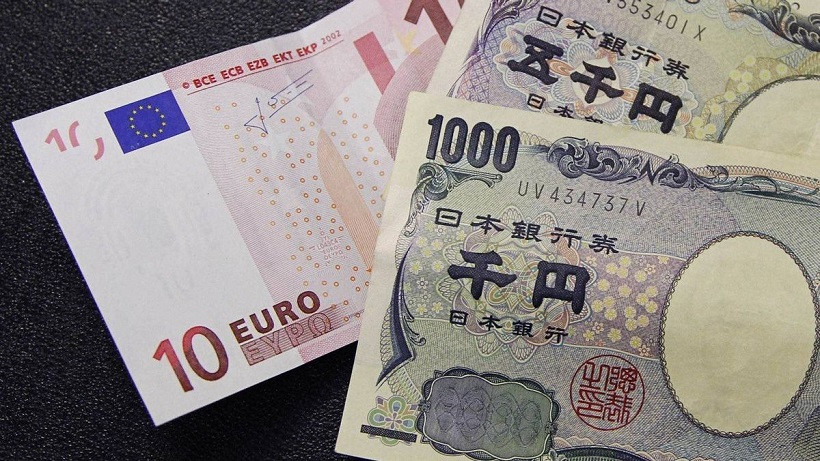On Friday, dollar pairs waited for the May Nonfarm Payrolls report, which was set to be published at the beginning of the US session. Therefore, even despite the decline in the US dollar index, it was still risky to open trading positions against the greenback: key data in the US labor market could redraw the fundamental picture of the day, especially considering the notorious Friday factor. After the previous day's report from ADP, many experts are pessimistic: instead of a 300,000 growth, the agency's specialists gave a 128,000 result. If the official figures were also disappointing, the dollar will remain under pressure. However, if, against all odds, the Nonfarm enters the green zone (especially if salaries surprise), dollar bulls will again be able to assert themselves, at least in the context of Friday's trading.
That is why on Friday, the dollar pairs were best observed from the sidelines. At the same time, you could look at some cross-pairs that are not tied to US macroeconomic statistics. The EUR/JPY should be singled out among the main crosses. There was a steady price increase here. The pair has been demonstrating a consistent upward movement for the second week already. Since May 26, the price has risen by almost 400 points, reflecting the strength of the upward trend. And here it should be noted that the cross is growing not only amid the weak positions of the yen, but also due to the strengthening of the euro. The single currency has been gaining momentum over the past few weeks thanks to hawkish rhetoric from the European Central Bank. Representatives of the ECB came to the general conclusion that it will be necessary to raise interest rates, and in the very near future. According to ECB President Christine Lagarde, the central bank will increase the deposit rate by 25 points in July and raise it to zero in September. She also added that "after this point, further hikes are possible."

However, the latest data on inflation growth in the eurozone enabled some experts to revise their earlier forecasts. For example, the German Deutsche Bank previously predicted two rate hikes (in July and September) in increments of 25 basis points. But this week, the bank updated its expectations - according to currency strategists, the ECB at one of the aforementioned meetings will raise the rate by 50 basis points, at the other - by 25. As a result, the deposit rate will increase in September to 0.25%. Deutsche Bank, like some other financial conglomerates, revised their forecasts after the release of data on the growth of the consumer price index in the euro area. As you know, inflation accelerated to 8.1% in May, which is four times the target of the ECB. CPI growth continues to exceed the forecasts of most analysts.
Meanwhile, the Bank of Japan at its last meeting ruled out the possibility of changing its current accommodative mood in the foreseeable future. Actually, for this reason, the Japanese currency actually ignored the latest release of key data on inflation in the country. Although the report surprised with its "green color": all components exceeded the forecast values. Commenting on this release, Bank of Japan Governor Haruhiko Kuroda expressed confidence that the rise in inflation is temporary and is due to rising energy and commodity prices. As an argument, he pointed to the weak growth of the consumer price index excluding food and energy prices, which indeed has been in the negative area for many months (since March 2021). In April, it exceeded zero, but its growth looks much more modest compared to the growth of the general CPI.
In general, the head of the BOJ said that it is "important for the central bank to support economic activity with strong monetary easing." According to him, it will take more time for Japan to establish a steady and stable inflation. It is unknown how long this will take. But it is clear that we are not talking about the medium term.
Thus, the divergence of the positions of the ECB and the BOJ allows EUR/JPY bulls to develop the upward trend, opening more and more new price horizons. The cross came close to the resistance level of 140.00. If the bulls overcome it, they will update the 7-year price highs, confirming the strength of the upward momentum. Given the current fundamental picture, bulls have not exhausted their potential and may settle above this target in the coming weeks.
The same goes for technique. On all "higher" timeframes (from H4 and above), the pair is either on the top or between the middle and top lines of the Bollinger Bands indicator. In addition, on the weekly chart, the Ichimoku indicator has formed one of its strongest bullish Parade of Lines signals. Therefore, it is advisable to use any corrective downward pullbacks to open long positions with 140.00 and 140.50 as targets (the upper line of the Bollinger Bands on the W1 timeframe).
Trading analysis offered by RobotFX and Flex EA.
Source



Please do not spam; comments and reviews are verified prior to publishing.